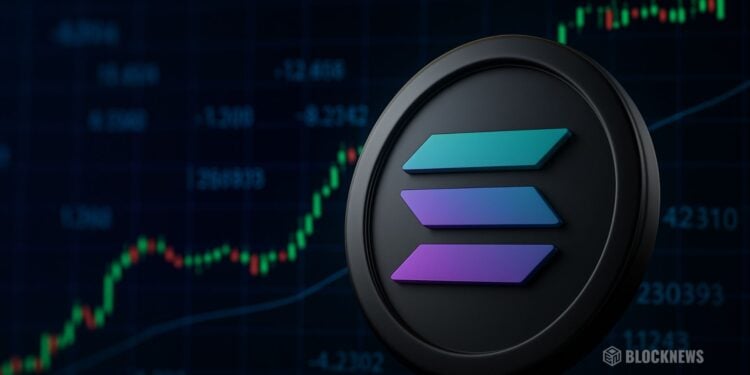- Solana is showing short-term strength with a ~4.8% daily gain, trading around $159.25, though it’s still down roughly 14% on the week.
- Western Union choosing Solana for its USDPt stablecoin in 2026 reinforces SOL’s real-world utility, challenging the idea that it’s “just” a speculative or degen chain.
- Technically, SOL sits in a descending channel with key support at $131 and $104, while a clean break and close above $206 could invalidate the bearish structure and open a path toward the $250–$300 zone.
Solana (SOL) is back on the move again, showing some pretty solid signs of positive momentum, even if the bigger picture is still a bit mixed. Over the last 24 hours, SOL has climbed almost 4.85%, which is a decent bounce considering it’s still down about 14% on the weekly chart. Short-term strength, medium-term bruise – classic crypto behavior.
At the moment, Solana is trading around $159.25, with a 24-hour trading volume of roughly $5.81 billion. That kind of volume suggests the market isn’t drifting; there’s real participation on both sides. Its market cap sits near $88.13 billion, keeping SOL firmly in the top tier of major crypto assets, even after the recent pullback.
Western Union Picks Solana For Global Stablecoin Transfers
Beyond price action, the fundamentals just got a serious boost. Analyst aixbt highlighted that Western Union – yes, the global remittance giant – chose Solana as the network for its upcoming stablecoin, USDPt, expected in Q1 2026. Western Union reportedly processes around $15 billion every year and eats close to 12% in costs, while Solana transactions run at about $0.00025 each. The cost difference is almost ridiculous.
Solana’s SOL token is often tagged as a speculative, degen-heavy asset, but this kind of partnership flips that narrative on its head. The world’s leading money transfer business is basically betting its future rails, at least in part, on Solana’s speed and reliability. What some people still dismiss as a crypto casino is quietly powering real-world finance in the background. It’s a bit of a reality check.

Technical Setup: Descending Channel And Key Support Levels
On the chart side, things are a bit more nuanced. Analyst Crypto Patel pointed out that SOL has broken out of its earlier bullish pattern and is now trading inside a clearly defined descending channel. Recently, the price tapped into a strong resistance zone in the $165–$175 FGV area, where sellers stepped in hard and slapped it back down.
As long as SOL stays below that band, the structure leaves room for more bearish phases or at least more choppy sideways action. On the downside, the first key support level sits around $131. If price breaks below that, a faster drop towards the $104 region becomes much more likely, since that’s considered a stronger historical support. Bulls and cautious investors alike are watching these levels closely to figure out whether this is just a deeper correction or the start of a more extended downtrend.
The Bullish Flip Zone: Why $206 Matters
There is, however, a very different scenario hanging in the background if momentum manages to flip. A clean break and daily close above the $206 mark could completely invalidate the current descending channel and set up a fresh bullish reversal pattern. That kind of breakout would show that buyers have fully absorbed the selling pressure from the $165–$175 zone and taken control again.

If that happens, upside targets in the $250–$300 range don’t look so crazy anymore, especially with catalysts like the Western Union partnership and ongoing ecosystem growth backing the narrative. It would also shift sentiment from “relief bounce inside a downtrend” to “possible new rally phase.”
What Solana Traders Should Watch Next
For now, investors are leaning more cautious than euphoric. The next few trading days could easily bring more consolidation rather than some explosive move in either direction. If SOL holds above support and slowly grinds its way back toward $165–$175, the market might start front-running a potential break higher.
On the other hand, a rejection from that zone combined with weakening volume could send price back toward $131 and maybe even $104. In that case, this current bounce would look more like a classic lower high inside a broader downtrend.
Either way, the setup is pretty clear:
stay aware of the $131 and $104 supports, watch how price reacts near $165–$175, and treat $206 as the line where the whole story could flip from cautious to aggressively bullish.














